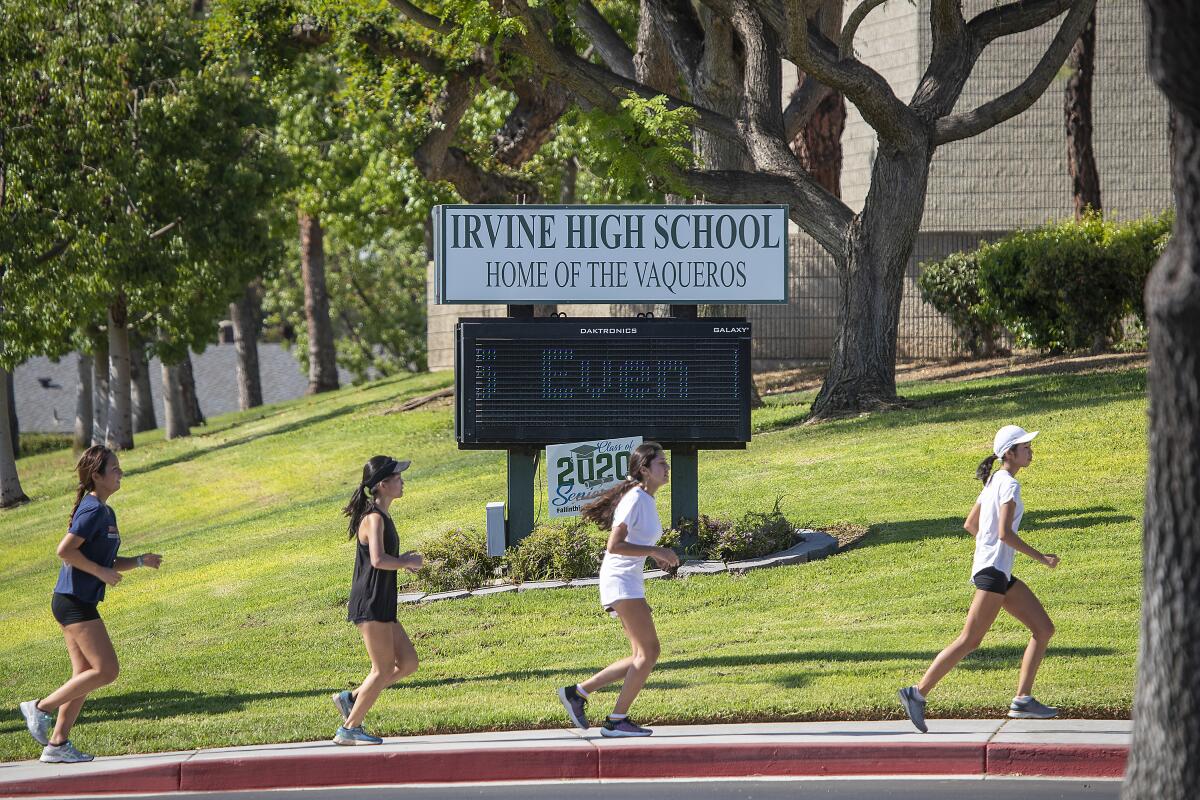Condoms, bathrooms and suspension: Three things that could change in California schools

SACRAMENTO — Condoms, gender-neutral bathrooms and an end to some suspensions? These are three ways California lawmakers want to make schools a haven for all.
Here’s what you need to know about three education bills that lawmakers passed this week and are now heading to Gov. Gavin Newsom. He has until Oct. 14 to sign or veto bills for this year.
Free condoms for high school students
In an effort to lower teen pregnancy rates and sexually transmitted diseases among teens, the Legislature passed state Senate Bill 541, by Sen. Caroline Menjivar (D-Panorama City), which would require California public high schools to offer free condoms to students starting as soon as next year.
“While California has seen a remarkable decline in teen pregnancies over the past decades, the rate of sexually transmitted infections among teens continue to rise,” Mara Decker, an associate professor at UC San Francisco focusing on adolescent sexual and adolescent health, said in March testimony before the Senate Education Committee. “Over half of sexually transmitted infections in the state are those ages 15 to 24.”
Originally, Menjivar intended for her bill to also improve teenagers’ access to the vaccine for human papillomavirus, or HPV, but it was amended to focus only on condoms.
Opponents of the idea, such as Greg Burt of the California Family Council, a conservative Christian advocacy group, previously told the Times that sex education in California schools has been a failure. Instead of getting more access to condoms, he said, students should be taught to limit their sexual activity.
In the Los Angeles Unified School District, high schools currently provide students with condoms on request, unless parents opt out of their children having that choice, according to a district spokesperson.
If signed, the law will also prohibit retailers from asking for proof of age or identification when minors buy condoms or nonprescription contraception.
Gender-neutral bathrooms
Students as young as first-graders may have guaranteed access to gender-neutral bathrooms as early as 2026. If signed by the governor, the bill would expand a decade-old law that allows students to use a bathroom that aligns with their gender identity.
Right now, California does not explicitly require schools to provide gender-neutral restrooms for students, but Senate Bill 760, by Sen. Josh Newman (D-Fullerton), would change that.
One survey that examined the experiences of students across U.S. schools found that 45% of LGBTQ+ and nonbinary students avoided using gender-segregated restrooms at school because they felt uncomfortable or unsafe.
Some schools in California already offer gender-inclusive bathrooms. Los Angeles Unified in 2016 became the first to open an all-gender bathroom and now provides a gender-neutral, one-person restroom for any student at any school if requested, a district spokesperson said.
Opponents of the bill were initially cautious about whether gender-neutral restrooms in schools would be limited to single stalls or multi-stalls. The fear was that multiple people of any gender going into a restroom could make for an unsafe environment. But Newman has said the bill was written with the understanding that all-gender bathrooms would be single use and provide private spaces to students.
The bill passed the Senate this week 32 to 7, with new amendments giving schools until 2026, instead of the original 2025 deadline, to build these restrooms.
An end to some suspensions
Senate Bill 274, by Sen. Nancy Skinner (D-Berkeley), would end the widely criticized “willful defiance suspension” that permits middle and high school educators to temporarily remove students for offenses such as disrupting the class by tapping their feet, talking back to a teacher or wearing a hat after being told to take it off. Suspensions disproportionately affect Black, Latino and Indigenous students, according to a state report.
“Suspensions pull a kid out of school, and, of course, those kids who might be acting in such a way that causes a suspension are often the kids that we really need to keep in school,” Skinner said before the Senate Education Committee in April. Skinner said children with a lot of suspensions have the highest dropout rates. “The premise is very simple of this bill. It’s the need to be in school.”
The bill passed the Assembly last week with amendments that phase out the ban in 2029 for middle and high schools. This means the Legislature will have to pass a new law if lawmakers want to continue prohibiting willful defiance suspensions past that date.
Under current law, willful defiance suspensions are permanently banned for students in kindergarten through fifth grade. Some educators expressed concern that their classrooms became more chaotic after the bans were placed. But, under a previous amendment of the bill, Skinner added that educators would still have the power to suspend students for violence, drug possession, bullying or theft.
Some school districts, such as Oakland, San Francisco, Pasadena and Los Angeles, have already stopped willful defiance suspensions, setting an example for the rest of the state.
Times education reporter Howard Blume contributed to this article.
More to Read
Sign up for Essential California
The most important California stories and recommendations in your inbox every morning.
You may occasionally receive promotional content from the Los Angeles Times.











